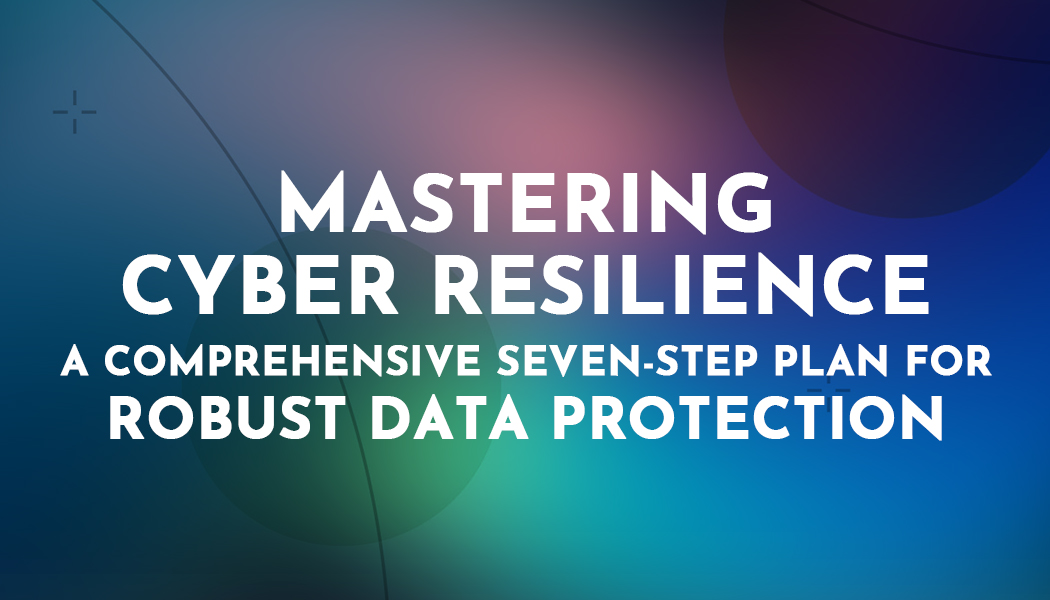Mastering Cyber Resilience: A Comprehensive Seven-Step Plan for Robust Data Protection
In an era where cyber threats are becoming more sophisticated and persistent, organizations find cyber-attacks are not a matter of 'if' but 'when.' In the face of such intricate attack vectors, the emphasis has shifted from prevention to a state of readiness. Organizations must respond effectively, deploy robust security controls, and facilitate speedy recovery after a data breach - this is the essence of 'cyber resilience.'
Unveiling the Importance of Cyber Resilience in Counteracting Cyber Attacks
Cyber resilience encapsulates an organization's or a system's ability to withstand, adjust to, and recover from a cyber attack. It necessitates the proactive establishment of protective measures that can help limit the damage of an attack and enable a swift return to normal operations.
The Key Principles of a Cyber Resilient System
Building cyber resilience hinges on meticulous data protection. Although cybersecurity can seem overwhelming, at its heart, data protection is about maintaining solid security hygiene and implementing comprehensive baseline processes. In the following, we present a seven-step guide to forge a resilient cyber resilience strategy for your organization:
Knowing Your Assets: The First Step
From Intellicomp Technologies, Kevin Kahn stresses the importance of the first move toward cyber resilience: understanding the assets that require safeguarding. "Recognizing both tangible assets like hardware and intangible ones like customer data and intellectual property, lays the groundwork for what needs to be protected," he explains.
Formulating and Executing Effective Policies
With Grok Technical Services, Steve Schafer underlines the importance of explicit policies and procedures. "Periodic review and modification of these policies, in alignment with current data security practices, can drastically reduce the likelihood of human error-triggered breaches," he suggests.
Setting Up Security Controls
Effective security controls guard against external threats and provide visibility into suspicious network activities. Leverage resources such as the CIS benchmarks to customize controls best suited to your organization.
The Necessity for Regular Monitoring
Regularly monitoring user activity on your network is a crucial part of early threat detection. "Vigilance against phishing attempts or unauthorized data access is vital to preserving data integrity," asserts Troy Drever from Pure IT.
Investing in Regular Employee Training
Regularly training employees about cybersecurity best practices can significantly diminish the risk of them falling prey to social engineering tactics.
The Importance of Regular System Testing
Routine system tests help uncover vulnerabilities early so they can be rectified promptly. This includes running penetration tests and maintaining regular data backups.
Planning for Incidents: The Preparedness Paradigm
A prepared incident response plan enables teams to respond quickly to unexpected events. This plan should guide each team member's actions under various scenarios and provide emergency contact information for external aid.
By adhering to these seven steps, your organization can ensure robust measures are in place to tackle incidents, fortifying your overall cyber resilience. For further insights, the Data Protection Solutions Guide offers detailed use cases, industry best practices frameworks, and a solution comparison to enhance your team's cyber resilience initiatives.
Fostering a Culture of Cyber Resilience
Going beyond developing and implementing policies and procedures, cultivating a culture of cyber resilience within an organization is equally significant. Kevin Kahn of Intellicomp Technologies emphasizes, "It's not just about the tools and processes we have in place. It's about creating a mindset within the organization where everyone understands their role in maintaining cybersecurity."
Promoting Active Participation in Cybersecurity Efforts
Inviting all stakeholders, from employees to management, to participate actively in the organization's cybersecurity efforts is vital. Steve Schafer from Grok Technical Services suggests, "Promoting a shared responsibility approach can instill a sense of ownership and accountability amongst staff, helping to enhance the overall security posture of the organization."
Implementing Advanced Security Solutions
Adopting state-of-the-art security solutions can bolster an organization's defense against cyber threats. Troy Drever from Pure IT recommends, "Investing in advanced security solutions that use machine learning and AI can help detect and mitigate cyber threats more effectively. These tools can offer predictive capabilities, allowing us to avoid potential attacks."
Ensuring Business Continuity
A sound cyber resilience strategy is crucial in ensuring business continuity. Kevin Kahn says, "In the face of a cyberattack, it's not just about getting back on our feet. It's about how quickly we can resume normal operations without causing significant disruption to our services."
Continuous Improvement in Cybersecurity Practices
The world of cybersecurity is dynamic, necessitating organizations to keep up with the latest trends and threats. Steve Schafer advises, "Continuous learning and improvement should be at the core of an organization's cybersecurity practices. We must constantly update our strategies based on emerging threats and technological advancements."
In conclusion, developing a robust cyber resilience strategy is not a one-time effort but a continuous learning, adapting, and improving process. By adhering to the seven steps and fostering a culture of cyber resilience, organizations can safeguard their valuable assets against cyber threats and ensure seamless operations even in the face of adversity. As the landscape of cybersecurity evolves, so must the strategies organizations employ to protect themselves.




